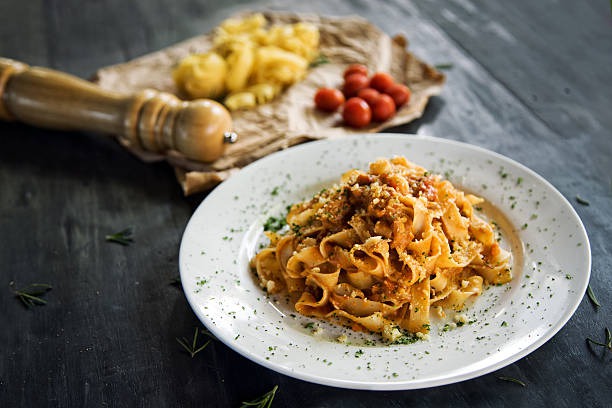Italian cuisine is a vibrant tapestry of flavors and traditions, with each region offering its unique culinary delights. Understanding what makes these regional dishes special can enhance your dining experience, whether you’re enjoying a meal at home or visiting Italy. Let’s explore this world of culinary diversity.
The Basics of Regional Italian Cuisine
Italy is not a homogenous mass of pasta and pizza. Instead, it boasts a myriad of regional cuisines that reflect the country’s geography, history, and cultural influences. Each region has its beloved ingredients and signature dishes that define it. From the rich, creamy sauces of the north to the sun-soaked vegetables and seafood of the south, there’s a vast culinary landscape to explore.
North vs. South: What Sets Them Apart
The division of Italy into northern and southern culinary traditions simplifies understanding of its diversity. Thanks to its cooler climate, northern Italian dishes tend to be richer, featuring butter, rice, and meats. Southern Italian cuisine, on the other hand, blends vibrant flavors with an abundance of tomatoes, olive oil, and fresh herbs, thanks to its sun-soaked terrain.
Northern Italy Highlights
-
Risotto: A creamy rice dish, often prepared with broth until it reaches a rich, velvety consistency. Variants like Risotto alla Milanese are legendary.
-
Polenta: Cornmeal porridge that can be served soft or allowed to set and then baked or fried.
-
Ossobuco: A specialty of Lombardy, this braised veal shank dish is famous for its depth of flavor.
Southern Italy Highlights
-
Pizza Napoletana: Originating from Naples, this simple pizza is recognized for its focus on top-quality ingredients.
-
Pasta alla Norma: A Sicilian dish showcasing eggplant, tomato, and ricotta salata cheese.
-
Seafood: With coastline aplenty, expect dishes like grilled octopus and spaghetti alle vongole, featuring flavors straight from the ocean.
Central Italy: A Culinary Crossroads
Central Italy boasts a delightful mix of traditions from its neighboring northern and southern counterparts. Tuscany and Lazio, for instance, are known for their rustic, hearty flavors.
-
Florentine Steak: Known as Bistecca alla Fiorentina, this dish is a must-try for meat lovers visiting Tuscany.
-
Porchetta: A savory, fatty, and moist boneless pork roast stuffed with garlic, herbs, and fennel, widely enjoyed in this region.
-
Cacio e Pepe: A classic Roman pasta dish centered around just cheese and pepper, yet bursting with flavor.
Flavors from the Islands of Sicily and Sardinia
Italy’s islands bring even more diversity to the Italian table. Sicily’s cuisine is a meld of Greek, Arab, and Spanish influences, while Sardinia’s dishes reveal a penchant for unique ingredients and bold flavors.
-
Caponata: A Sicilian eggplant-based dish that’s an eclectic mix of sweet and sour flavors.
-
Cassata: A traditional sweet from Sicily featuring ricotta cheese, sponge cake, and marzipan.
-
Porcheddu: Sardinia’s signature roasted suckling pig seasoned with myrtle and fennel.
What to Expect on the Menu at Italian Restaurants
When visiting an Italian restaurant, the menu can be as diverse as the regions themselves. Each dish is likely a homage to a specific place, using authentic methods to capture the true essence of Italian cooking. Italian menus are structured in courses, typically beginning with an “antipasto” (starter), moving to “primi” (first course), “secondi” (second course), and finally, “dolce” (dessert). This customary meal structure offers diners a chance to savor a bit of everything.
-
Antipasto: Start your meal with cured meats, cheeses, and marinated vegetables. Bruschetta, a toasted bread with various toppings, is also a popular choice.
-
Primi: Indulge in pasta, risotto, or gnocchi dishes, which are abundant in this course.
-
Secondi: Expect meat or fish dishes, often with a side of vegetables.
-
Dolce: Treat yourself to classic Italian desserts such as tiramisu or panna cotta.
For those dining at Italian restaurants in Sarasota, it’s common to find selections that represent different regions, offering a well-rounded experience.
Savoring the Authentic Chianti Menu
Occasionally, establishments offer specialized menus that pay tribute to distinct Italian regions. For instance, the Chianti Menu Sarasota might focus on Tuscan flavors. This setting allows diners to immerse themselves in a specific Italian terroir, enjoying dishes accompanied by region-specific wines.
Decoding Italian Food Terms on the Menu
Italian menus can sometimes be an enigma with their foreign terms. Here’s a quick guide to help you sound like a pro when ordering:
-
Al dente: Describes how pasta should be cooked, meaning it’s firm to the bite.
-
Alla Bolognese: A rich meat sauce from Bologna, often with tomatoes, onions, and wine.
-
Parmigiana: Refers to dishes topped with Parmesan cheese, like Melanzane alla Parmigiana (eggplant Parmesan).
Understanding these terms will enhance your dining experience and help you choose dishes that suit your palate.
Diversity in Wines Paired with Italian Dishes
No Italian meal is complete without the perfect wine pairing. Italy is one of the world’s largest wine producers, and like its food, its wine regions vary greatly in style and flavor.
-
Red Wines: Best enjoyed with savory and hearty dishes. Chianti from Tuscany is a classic choice.
-
White Wines: Pair with lighter dishes such as seafood or risotto. Look for a Pinot Grigio from Friuli Venezia Giulia.
-
Sparkling Wines: Prosecco is a joyful addition to any meal, known for its crisp, refreshing qualities.
When you order from this Italian restaurant in Sarasota, consider asking for wine recommendations that complement your chosen dishes. It’s an excellent way to elevate your meal.
Experimenting with Italian Gastronomy at Home
Feeling inspired to bring a slice of Italy into your kitchen? Here are some tips to get you started:
-
Source Quality Ingredients: Authentic Italian cuisine is all about high-quality produce. Visit local farmers’ markets for fresh vegetables, meats, and cheeses.
-
Learn the Basics: Master a few essential recipes like a simple tomato sauce or a basic risotto.
-
Experiment with Flavors: Don’t be afraid to try new combinations, embracing the creativity that Italian chefs are known for.
By experimenting with these concepts, you can begin to create your Italian-inspired dishes perfectly tailored to your tastes.
Wrap Up
The journey into Italian cuisine offers endless discoveries and delights. Each region provides a distinct identity and flavor profile, inviting you to sample a wide range of dishes and experiences. Whether in the comfort of a restaurant or your kitchen, the world of Italian gastronomy awaits your exploration. As you embark on this flavorful adventure, remember that it’s not just about the food; it’s about the traditions, the culture, and the joy of sharing a meal with family and friends.



